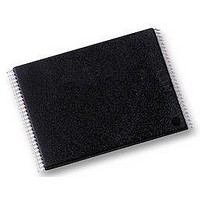NAND01GW3B2BN6E NUMONYX, NAND01GW3B2BN6E Datasheet - Page 37

NAND01GW3B2BN6E
Manufacturer Part Number
NAND01GW3B2BN6E
Description
IC, FLASH, 1GB, 25µS, TSOP-48
Manufacturer
NUMONYX
Specifications of NAND01GW3B2BN6E
Memory Type
Flash
Memory Size
1GB
Access Time
25µs
Supply Voltage Range
2.7V To 3.6V
Memory Case Style
TSOP
No. Of Pins
48
Operating Temperature Range
-40°C To +85°C
Voltage, Vcc
3.3V
Rohs Compliant
Yes
Interface
Serial
Lead Free Status / RoHS Status
Lead free / RoHS Compliant
Available stocks
Company
Part Number
Manufacturer
Quantity
Price
Part Number:
NAND01GW3B2BN6E
Manufacturer:
ST
Quantity:
20 000
NAND01G-B2B, NAND02G-B2C
8.3
8.4
8.5
Garbage collection
When a data page needs to be modified, it is faster to write to the first available page, and
the previous page is marked as invalid. After several updates it is necessary to remove
invalid pages to free some memory space.
To free this memory space and allow further program operations it is recommended to
implement a garbage collection algorithm. In a garbage collection software the valid pages
are copied into a free area and the block containing the invalid pages is erased (see
Figure
Wear-leveling algorithm
For write-intensive applications, it is recommended to implement a wear-leveling algorithm
to monitor and spread the number of write cycles per block.
In memories that do not use a wear-leveling algorithm not all blocks get used at the same
rate. Blocks with long-lived data do not endure as many write cycles as the blocks with
frequently-changed data.
The wear-leveling algorithm ensures that equal use is made of all the available write cycles
for each block. There are two wear-leveling levels:
The second level wear-leveling is triggered when the difference between the maximum and
the minimum number of write cycles per block reaches a specific threshold.
Error correction code
An error correction code (ECC) can be implemented in the NAND flash memories to identify
and correct errors in the data.
For every 2048 bits in the device it is recommended to implement 22 bits of ECC (16 bits for
line parity plus 6 bits for column parity).
An ECC model is available in VHDL or Verilog. Contact the nearest Numonyx sales office for
more details.
First level wear-leveling, new data is programmed to the free blocks that have had the
fewest write cycles
Second level wear-leveling, long-lived data is copied to another block so that the
original block can be used for more frequently-changed data.
16).
Software algorithms
37/60












